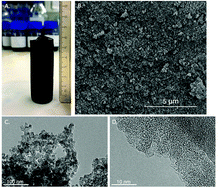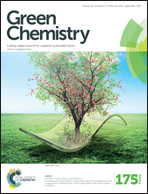Meso- and microporous soft templated hydrothermal carbons for dye removal from water†
Abstract
The hydrothermal carbonization (HTC) technique has shown a great ability in the synthesis of carbon materials with special properties for a wide range of different applications. Here, a hypersaline salt mixture (LiCl–ZnCl2) combined with hydrothermal carbonization was applied in order to obtain sulfur containing micro- and mesoporous (0.3–40 nm) monolithic carbons with high surface areas (400–550 m2 g−1) and well developed porosity (0.4–1.2 cm3 g−1). Fructose was used as a carbon source and sulfur was introduced in an aromatic configuration as 2-thiophenecarboxaldehyde. The resulting carbon materials showed a promising removal capacity (qe = 0.3 mmol g−1) towards methylene blue and the adsorption followed the Sips isotherm independent of the pH. Intraparticle diffusion appeared to control the adsorption kinetics. Carbon materials could be easily regenerated with simple ethanol washing. The dye pollutant could be completely desorbed from the adsorbent's surface, while the adsorbent still maintained removal efficiency of above 90% during three cycles.


 Please wait while we load your content...
Please wait while we load your content...